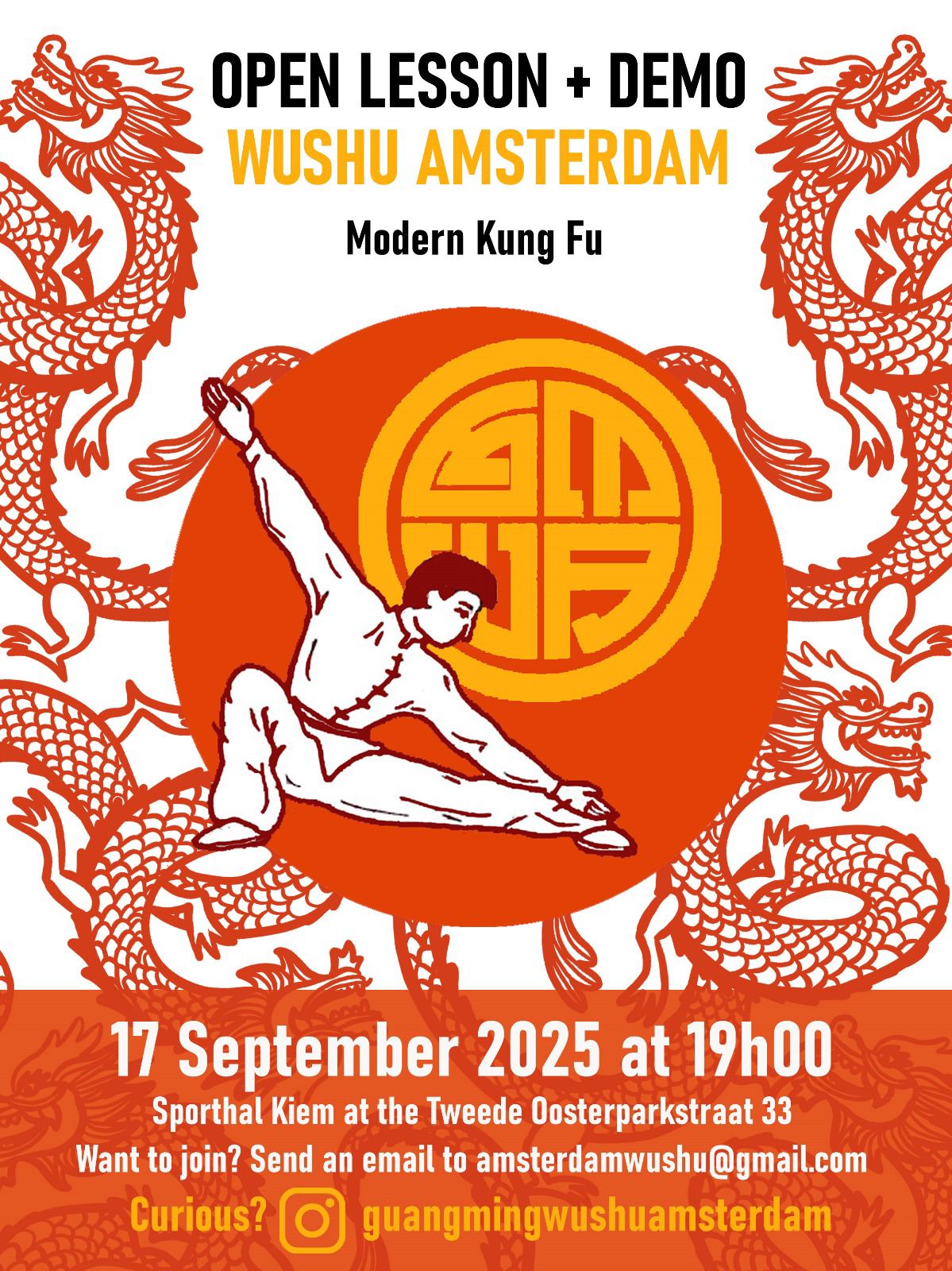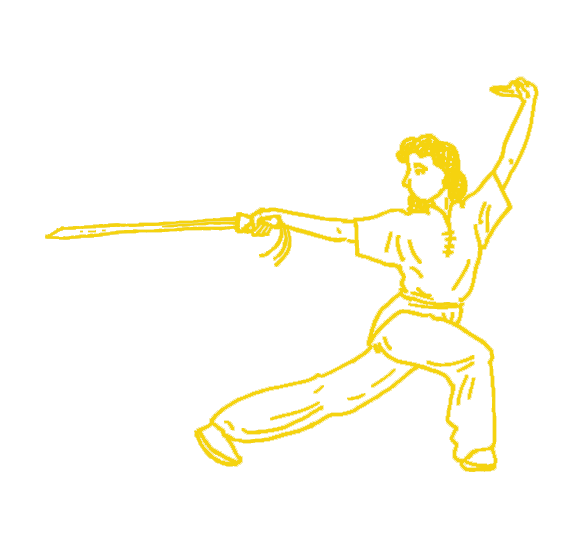

We are practitioners of the martial arts "Wushu" (which translates itself to martial (武; wǔ) and arts (術, shù)). We practice various styles and forms, though mostly focussing on more modern styles. The trainings are open to all levels, no matter how green you are considering your level of kungfu. Feel free to join us at our trainings!
Training days
Wednesday 19:00-21:00 at Tweede Oosterparkstraat 33
Fridays 19:00-21:00 at James Wattstraat 10
€35 for non-students and €30 for students per month.
Free trial sessions are always possible!








Wushu was developed in China after 1949, in an effort to standardize the practice of traditional Chinese martial arts and has since been evolving its two disciplines: taolu (套路, forms) and sanda (散打, sparring). Taolu consists of two main fist styles: changquan (long fist) and nanquan (southern fist).
Chang quan
Changquan (simplified Chinese: 长拳; traditional Chinese: 長拳), also konwn as 'Long Fist', refers to a family of external (as opposed to internal) martial arts (kung fu) styles from northern China. The forms of the Long Fist style emphasize fully extended kicks and striking techniques, and by appearance would be considered a long-range fighting system. The Long Fist style is considered to contain a good balance of hand and foot techniques, but in particular it is renowned for its impressive acrobatic kicks.[2] In demonstration events, Long Fist techniques are most popular and memorable for their whirling, running, leaping, and acrobatics. Contemporary changquan moves are difficult to perform, requiring great flexibility and athleticism comparable to that of gymnastics.
Nan quan
Contemporary Nanquan features vigorous, athletic movements with very stable, low stances, extensive hand techniques and a vocal articulation called fasheng ("release shout"), which is the predecessor of the Japanese and Korean martial arts kiai. Power is driven from sharp waist movements with special emphasis on fast stance transition to generate power and speed in the arms.
Weapons
Dao (pronunciation: [táʊ], Chinese: 刀; pinyin: dāo) are single-edged Chinese swords, primarily used for slashing and chopping. Jianshu. Nandao. Taijijian. Taijishan. Gunshu. Qiangshu. Nangun.
Traditional forms
The majority of routines used in the sport are new, modernized recompilations of traditional routines. However, routines taken directly from traditional styles, including the styles that are not part of standard events, may be performed in competition, especially in China. Many of these styles though are events in the World Kung Fu Championships, another IWUF-run event which is exclusively for traditional styles of wushu. The more commonly seen routines include:
Baguazhang (八卦掌) – Eight-Trigrams Palm. Bajiquan (八極拳/八极拳) – Eight Extremes Fist/Boxing. Chāquán (查拳) – Cha Fist/Boxing. Chuōjiǎo (戳腳/戳脚) – Poking Feet. Ditangquan (地躺拳) – Ground-Prone Fist/Boxing. Fānziquán (翻子拳) – Tumbling Fist/Boxing. Houquan (猴拳) – Monkey Fist/Boxing. and more
Instagram news feed